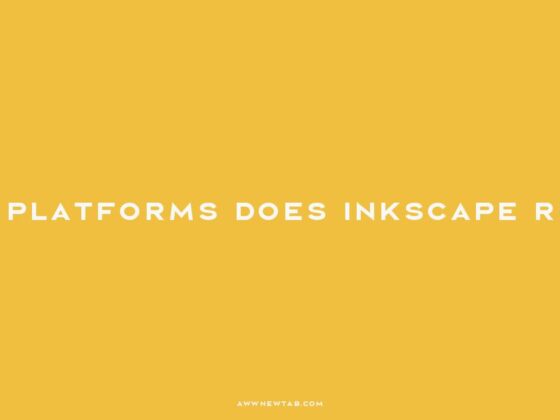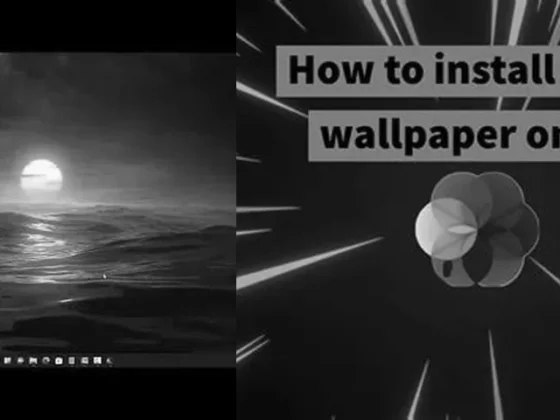How Do I Use Media Player On Google Chrome: Are you tired of fumbling around with different media players on your computer? Look no further! In this blog post, we will show you how to master media playback in Google Chrome, so you can enjoy all your favorite videos and music hassle-free. Whether you’re a movie buff or a music lover, we’ve got you covered. Get ready to dive into the world of Chrome’s multimedia capabilities and unleash the power of your media player. So, grab a snack, sit back, and let’s get started on this media-filled adventure!
Mastering Media Playback in Google Chrome
Google Chrome isn’t just a gateway to browsing the internet; it’s also a versatile platform for multimedia enjoyment. With the integration of a media player, Chrome provides users with a seamless experience for playing audio and video files. Let’s dive into the specifics of utilizing the media player within Google Chrome, turning your browser into a multimedia powerhouse.
Accessing Media Controls in Chrome
When you’re multitasking across various tabs, managing media playback should be as effortless as possible. Google Chrome understands this need and has a built-in solution for controlling audio and video directly from the browser interface.
- Initiating Media Playback: Begin by opening Chrome on your computer and navigating to any tab where you can play music, a video, or any media with sound.
- Media Control Icon: Look for the Media control icon, which is conveniently located at the top right corner of the browser. This icon becomes your command center for all media playing in Chrome.
- Controlling Playback: By clicking on the Media control icon, you have the power to pause the current media, skip to the next song or video, or swiftly return to the tab where the media originates.
With these steps, managing what’s playing is a breeze, and you don’t even have to navigate away from the work you’re doing in other tabs.
Introducing the Media Hub
Chrome’s media hub is your one-stop destination for all things audio and video. This feature is a testament to Chrome’s commitment to providing a user-friendly and integrated media experience.
- To access the media hub, simply click the media control icon in the top right corner of Chrome on your desktop.
- The media hub pops out, allowing you to manage what’s playing without having to shuffle through multiple tabs or windows.
This centralized hub makes it simple to see what’s playing and control it from one place, enhancing your media consumption experience while using Chrome.
VLC Media Player Extension for Chrome
The VLC Media Player is widely recognized for its versatility and compatibility with a multitude of video formats. It stands as one of the best media player extensions for Chrome, ensuring a reliable playback experience.
- Installation: To enhance your media playback on Chrome, you can install the VLC Media Player extension from the Chrome Web Store.
- Features: Once installed, this extension allows you to play most video files directly in your browser, thanks to VLC’s robust format support.
The VLC extension transforms your Chrome into a more powerful media player, extending its native capabilities with the trusted performance of VLC.
Windows Media Player HTML5 Extension for Chrome
Microsoft Open Technologies has crafted the Windows Media Player HTML5 Extension for Chrome, which serves as a bridge for viewing video files on selected websites.
- Compatibility: This add-on is particularly useful for those who prefer the familiar interface of Windows Media Player, coupled with the convenience of HTML5 video playback.
- Functionality: With this extension, users can enjoy seamless video streaming on websites that are optimized for Windows Media Player playback.
By combining the strengths of Chrome and Windows Media Player, this extension delivers a comfortable and cohesive viewing experience.
Building Your Own Media Player with Media Chrome
For those who crave customization and have a knack for web development, Media Chrome presents an exciting opportunity. It’s a collection of fully customizable media player controls and components that allow you to create a media player from the ground up.
- Customization: Media Chrome components are designed to be styled and integrated into your web projects, giving you complete control over the user interface.
- Separation of Concerns: A core philosophy behind Media Chrome is the clear separation of UI from media playback, ensuring that you can design the player’s appearance without affecting its functionality.
This approach empowers developers to build media players that are not only functional but also perfectly tailored to the aesthetics of their websites or applications.
Downloading Media from Chrome
While enjoying media content online is convenient, there are times when you might want to download media for offline use. Whether it’s for preserving a favorite video or creating a personal music library, Chrome facilitates this need with a few simple steps.
- Finding Media: As you browse the web, you may come across downloadable media files. These files can often be saved directly by right-clicking and selecting “Save link as…” or by using a download button provided on the site.
- Using Extensions: For media that isn’t readily downloadable, there are several Chrome extensions designed to assist in capturing media files from various websites. Be cautious and respect copyright laws when using such tools.
Downloading media should always be done responsibly and in compliance with the website’s terms of service and copyright regulations.
Conclusion: Embracing Chrome’s Multimedia Capabilities
Google Chrome’s media player and its associated features and extensions provide an enriching multimedia experience for users. From the ease of media playback control to the robustness of VLC and Windows Media Player extensions, Chrome proves to be more than just a browser—it’s a multimedia companion for the modern internet user.
Furthermore, the innovative Media Chrome initiative opens doors for developers to craft bespoke media players that align with their creative visions. Whether you’re a casual user or a developer, Chrome’s media capabilities are designed to cater to a wide array of needs, making it a top choice for multimedia consumption and creation on the web.
By harnessing Chrome’s media features, you can transform your browsing experience into a personalized entertainment hub, tailored to your preferences and requirements. Embrace the multimedia functionalities that Chrome offers and elevate your audio and video interactions to new heights.
FAQ & Related Questions about Using Media Player on Google Chrome
Q: How do I use the media player on Google Chrome?
A: To use the media player on Google Chrome, open Chrome on your computer, play music or a video in a tab, and then click on the Media control icon at the top right of the browser. From there, you can control the sound, pause, go to the next song or video, or return to the tab where the media is playing.
Q: How do I access media in Chrome?
A: To access media in Chrome, simply click on the icon in the top right corner of Chrome on your desktop. This will open the new media hub where you can manage what’s playing and control your media.
Q: What is Media Chrome?
A: Media Chrome is a collection of fully customizable media player controls and components. It allows you to build a media player from scratch and separates the user interface (UI) from media playback.
Q: Does Chrome have Windows Media Player?
A: No, Chrome does not have Windows Media Player built-in. However, there is a Windows Media Player HTML5 Extension for Chrome created by Microsoft Open Technologies that enables viewing video files on specific websites.
Q: Does Chromebook come with a media player?
A: Yes, Chromebooks come with a media player. Although they don’t have a CD or DVD drive, you can play saved music and movie files in compatible file types using the media player. You can also play files from a USB drive or SD card.
Q: How do I download media from Chrome?
A: To download media from Chrome, you can right-click on the media file or link and select “Save link as” or “Download” option. This will allow you to save the media file to your computer for offline access.


